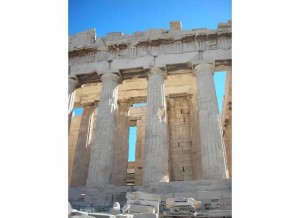A Journey to Athens Supports Restitution of the Parthenon Marbles
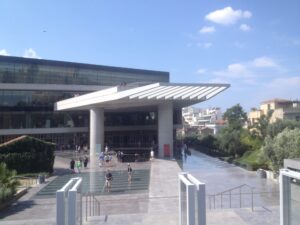 I have expressed my support of the British Museum’s return of the Parthenon Marbles to Greece. Contrary to the many assumptions made in the emails I received after publication of a my op-ed in Forbes, a Letter to the Editor in the NY Times, and my prior blog posts on this topic, my ethnicity is not Greek. Rather, I advocate for the restitution of the Parthenon Marbles because it is the right thing to do. Further, as an attorney I believe there is a basis for Greece to demand restitution of the works. Although litigation is not the best option for Greece, the Mediterranean nation has many tools at its disposal, such as negotiations, cooperative projects with the British Museum, and long-term loans.
I have expressed my support of the British Museum’s return of the Parthenon Marbles to Greece. Contrary to the many assumptions made in the emails I received after publication of a my op-ed in Forbes, a Letter to the Editor in the NY Times, and my prior blog posts on this topic, my ethnicity is not Greek. Rather, I advocate for the restitution of the Parthenon Marbles because it is the right thing to do. Further, as an attorney I believe there is a basis for Greece to demand restitution of the works. Although litigation is not the best option for Greece, the Mediterranean nation has many tools at its disposal, such as negotiations, cooperative projects with the British Museum, and long-term loans.
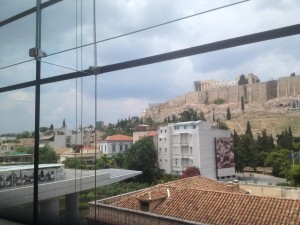 I have memories of my first trip to Greece, taken back in 2006, during which time I visited dozens of museums and heritage sites. I was in awe of the cultural wealth of the ancient nation. As the years passed, memories faded, but I never lost sight of the richness of the country’s cultural heritage. Luckily I had the opportunity to return to the cultural giant this summer. I was thrilled with the state-of-the-art facilities at the new Acropolis Museum. The museum is at the foot of the Acropolis, the most recognized structure of the ancient world; the historic mount is visible from the windows of the museum, with the most breath-taking views from the outdoor café. Not only is the Acropolis visible in the distance, but the Parthenon can be seen in distinct detail. The Acropolis Museum’s brightly lit galleries display what remains of the Acropolis Marbles in Greece. Seeing the remains of the objects in the museum next to their birthplace gave me greater appreciation for them, but it also angered me. The museum curators did a wonderful job in labeling the works and identifying objects currently in possession of the British Museum and being withheld from their Greek homeland. Plaster copies are on display, allowing visitors to view copies of the original objects that are being held hostage at the British Museum; the displaced objects are displayed with a British Museum “BM” notation underneath. Each “BM” is a bitter reminder that the marbles are not in their rightful location.
I have memories of my first trip to Greece, taken back in 2006, during which time I visited dozens of museums and heritage sites. I was in awe of the cultural wealth of the ancient nation. As the years passed, memories faded, but I never lost sight of the richness of the country’s cultural heritage. Luckily I had the opportunity to return to the cultural giant this summer. I was thrilled with the state-of-the-art facilities at the new Acropolis Museum. The museum is at the foot of the Acropolis, the most recognized structure of the ancient world; the historic mount is visible from the windows of the museum, with the most breath-taking views from the outdoor café. Not only is the Acropolis visible in the distance, but the Parthenon can be seen in distinct detail. The Acropolis Museum’s brightly lit galleries display what remains of the Acropolis Marbles in Greece. Seeing the remains of the objects in the museum next to their birthplace gave me greater appreciation for them, but it also angered me. The museum curators did a wonderful job in labeling the works and identifying objects currently in possession of the British Museum and being withheld from their Greek homeland. Plaster copies are on display, allowing visitors to view copies of the original objects that are being held hostage at the British Museum; the displaced objects are displayed with a British Museum “BM” notation underneath. Each “BM” is a bitter reminder that the marbles are not in their rightful location.
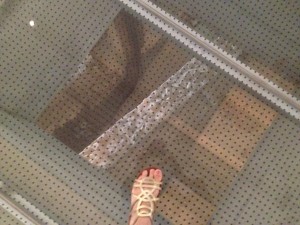 In addition to the marbles from the Acropolis, the museum highlights many impressive aspects of Greece’s ancient history. The entrance to the sleek museum features glass floors that allow visitors to view the archaeological remains beneath the museum; context doesn’t get any better than that. Contrary to the arguments made by the British Museum, the Acropolis Museum is a bustling site, a reflection of the ancient Acropolis itself. There was a long line of people waiting for tickets when I visited on a Tuesday morning in June. The museum was packed with visitors, from the café to the gift shop to the bright and sunny rooms throughout the modern building. The sight of so many tourists spurred me once again to question the validity of tourism statistics cited by the British Museum as a reason for withholding the Parthenon Marbles. And even if the British Museum has a greater number of visitors, are they all there for the Parthenon Marbles? Clearly all visitors to Athens’ Acropolis Museum are there with the intention to see the impressive carvings from the Acropolis, including the Parthenon Marbles.
In addition to the marbles from the Acropolis, the museum highlights many impressive aspects of Greece’s ancient history. The entrance to the sleek museum features glass floors that allow visitors to view the archaeological remains beneath the museum; context doesn’t get any better than that. Contrary to the arguments made by the British Museum, the Acropolis Museum is a bustling site, a reflection of the ancient Acropolis itself. There was a long line of people waiting for tickets when I visited on a Tuesday morning in June. The museum was packed with visitors, from the café to the gift shop to the bright and sunny rooms throughout the modern building. The sight of so many tourists spurred me once again to question the validity of tourism statistics cited by the British Museum as a reason for withholding the Parthenon Marbles. And even if the British Museum has a greater number of visitors, are they all there for the Parthenon Marbles? Clearly all visitors to Athens’ Acropolis Museum are there with the intention to see the impressive carvings from the Acropolis, including the Parthenon Marbles.
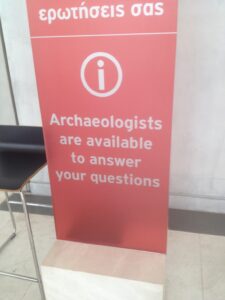 Furthermore, the museum houses a vast array of objects from Athens, as well as others parts of Greece, in an attempt to present the Acropolis marbles in their original and appropriate context. The objects are clearly labeled and explained in both Greek and English so that even the novice history enthusiast can understand and enjoy the displays. All of the treasures are vigilantly guarded by high-tech security, while guards are found in every room watching over visitors and protecting priceless objects. Most surprisingly, unlike any museum I’ve ever seen, there are archaeologists on site to answer questions. That is the most impressive feature I’ve ever seen in a museum!
Furthermore, the museum houses a vast array of objects from Athens, as well as others parts of Greece, in an attempt to present the Acropolis marbles in their original and appropriate context. The objects are clearly labeled and explained in both Greek and English so that even the novice history enthusiast can understand and enjoy the displays. All of the treasures are vigilantly guarded by high-tech security, while guards are found in every room watching over visitors and protecting priceless objects. Most surprisingly, unlike any museum I’ve ever seen, there are archaeologists on site to answer questions. That is the most impressive feature I’ve ever seen in a museum!
Every moment in the new Acropolis Museum was a gift from the past. I felt captivated by the art, fascinated by the context and information provided to visitors (including films, signage, and small-scale architectural models, etc.), delighted by the helpfulness of staff, and impressed by the sheer beauty of the museum and the sublime nature of its contents.
 After visiting the museum, I had an opportunity to revisit the Acropolis. It was an inspirational journey, as the timelessness of the mount has an emotional effect on everyone interested in archaeology, Western civilization, and cultural symbols and icons. My visit drew to a close as the sun was starting its descent and the wind was blowing atop the site that witnessed some of the greatest advancements in human civilization. Memories accrued during this trip inspire me to continue to fight for the rightful return of objects that were unjustly torn from Greek soil at a time when Greece was vulnerable, struggling, and unable to defend itself against international powers. And no, I’m not referring to the current 2015 economic crisis but to the early 19th century one, when Lord Elgin plundered the most significant symbols of Athens to decorate his mansion and eventually sold them to the British Museum.
After visiting the museum, I had an opportunity to revisit the Acropolis. It was an inspirational journey, as the timelessness of the mount has an emotional effect on everyone interested in archaeology, Western civilization, and cultural symbols and icons. My visit drew to a close as the sun was starting its descent and the wind was blowing atop the site that witnessed some of the greatest advancements in human civilization. Memories accrued during this trip inspire me to continue to fight for the rightful return of objects that were unjustly torn from Greek soil at a time when Greece was vulnerable, struggling, and unable to defend itself against international powers. And no, I’m not referring to the current 2015 economic crisis but to the early 19th century one, when Lord Elgin plundered the most significant symbols of Athens to decorate his mansion and eventually sold them to the British Museum.
The Greeks are cognizant of this heritage debate and its roots in Colonial Imperialism. The overwhelming sentiment expressed by the locals in Athens is that they will continue to fight for their heritage. The richness of their heritage helps to define them. All offers from the British Museum to help Greece during the current crisis in exchange for the Parthenon Marbles are disrespectful and preposterous. And so the fight continues for the just restitution of the objects that symbolize Athens, Greece, and Western Civilization. It will continue until the objects are delivered safely home.
For information about the significance of the Parthenon, please watch this [video_lightbox_youtube video_id=”ilhg53m3Gi8″ width=”640″ height=”480″ anchor=”great video”]
If you are in Greece on July 27 and 28, consider attending the Third International Colloquy on Reunification of the Parthenon Sculptures at the Acropolis Museum (http://www.svenskaparthenon.se/3rd_colloquy_press_release.pdf).
